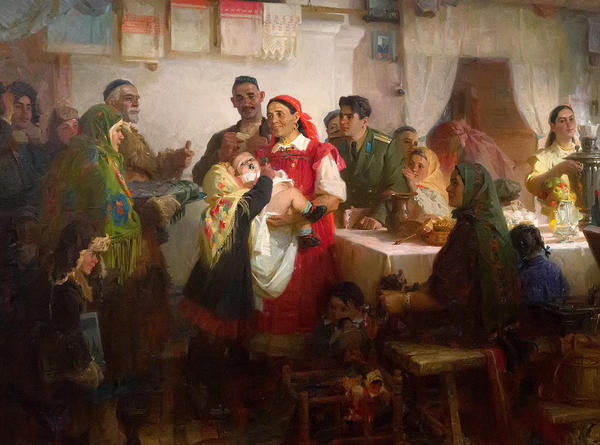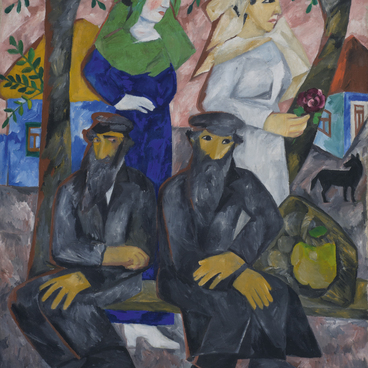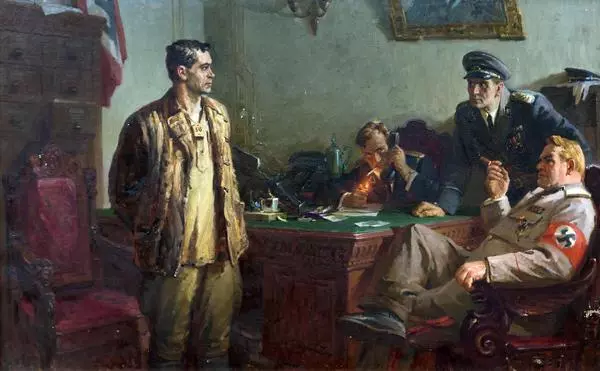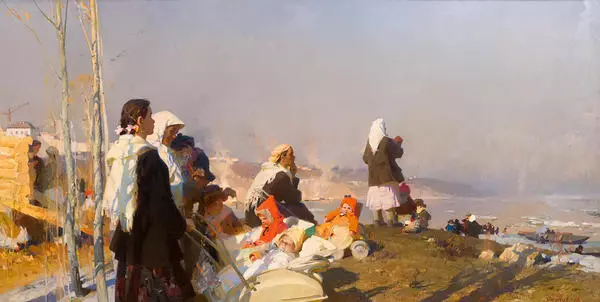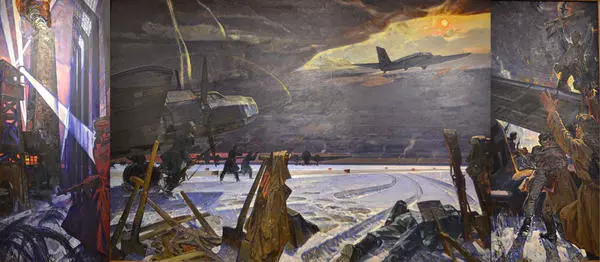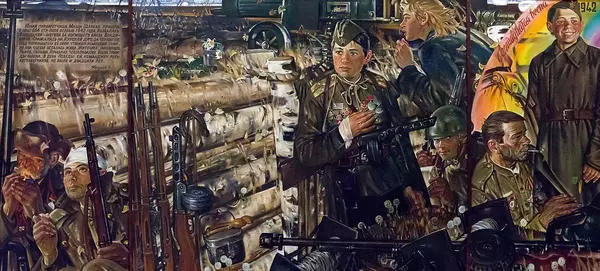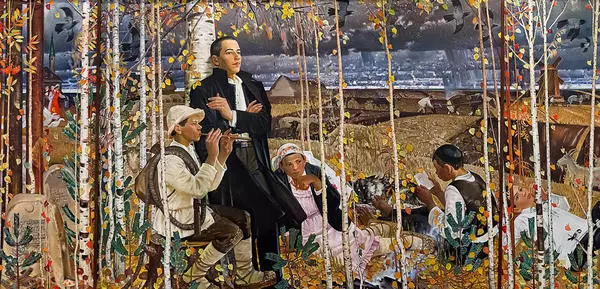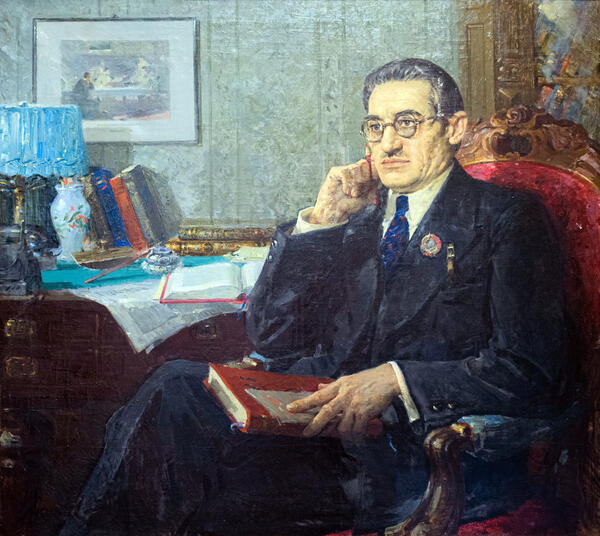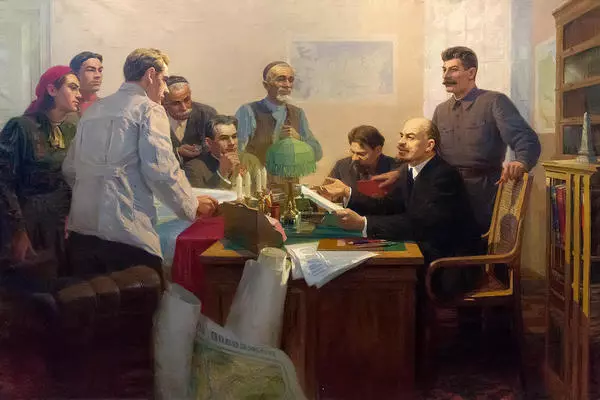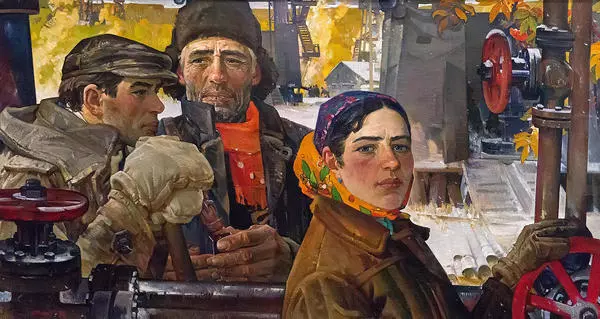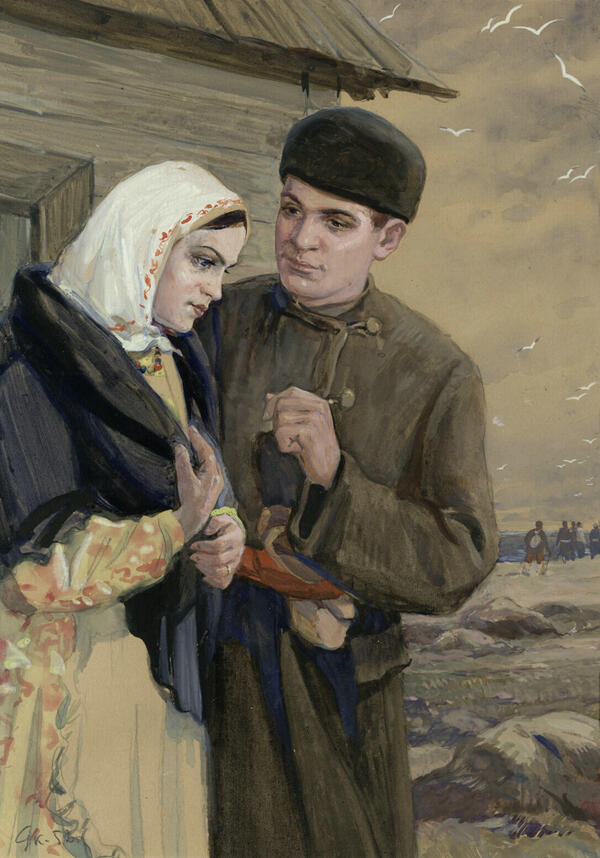In 1957, preparation for the upcoming Decade of Literature and Art was in full swing in Tatarstan. Such Decades were held as a sort of demonstration of cultural achievements in the Soviet Union constituent republics. On that occasion, artist Haris Yakupov was requested to make a picture depicting contemporary life of the Tatar people. At the same time, the painting was expected to vividly display national specifics: Tatar customs and habits, national costume, faces, personalities. For that picture, Yakupov chose a traditional celebration party in a large Tatar family. He captured the moment of village neighbors coming over to congratulate the woman on winning government award.
The honorary title of Mother Heroine was established in 1944 in the USSR by government decree on recognition and reward to mothers bearing and raising a large family. Such a decree was needed in order to encourage new births and improve the national demographic situation following tremendous losses in the Great Patriotic War. The title was awarded to mothers bearing and raising 10 or more children. The title was accompanied by the Mother Heroine Order to be worn on the left breast above other insignia, if any. The award was given on the last child’s first birthday.
Yakupov’s paining Tribute to Mother Heroine is a large composition covering nearly four square meters with multiple figures in it, numbering in fact nineteen persons. The picture represents a narrative, the style stemming from the itinerant artist tradition. Adhering to the principles of realism in art Yakupov put in a lot of effort preparing for that work: looking for typical and expressive faces, making preliminary sketches from life, and designing the composition.
All the objects in this painting are indicative of the family wellbeing. The room is festively decorated with embroidered towels; the table is large covered by a table cloth with a samovar and full of treats. The inner state of the characters is easy to read: the mother is beaming with joy, her husband is proud for his wife and his household, the boy is laughing, the girl with toys is somewhat frightened, and the elder daughter looks serious and calm.
The honorary title of Mother Heroine was established in 1944 in the USSR by government decree on recognition and reward to mothers bearing and raising a large family. Such a decree was needed in order to encourage new births and improve the national demographic situation following tremendous losses in the Great Patriotic War. The title was awarded to mothers bearing and raising 10 or more children. The title was accompanied by the Mother Heroine Order to be worn on the left breast above other insignia, if any. The award was given on the last child’s first birthday.
Yakupov’s paining Tribute to Mother Heroine is a large composition covering nearly four square meters with multiple figures in it, numbering in fact nineteen persons. The picture represents a narrative, the style stemming from the itinerant artist tradition. Adhering to the principles of realism in art Yakupov put in a lot of effort preparing for that work: looking for typical and expressive faces, making preliminary sketches from life, and designing the composition.
All the objects in this painting are indicative of the family wellbeing. The room is festively decorated with embroidered towels; the table is large covered by a table cloth with a samovar and full of treats. The inner state of the characters is easy to read: the mother is beaming with joy, her husband is proud for his wife and his household, the boy is laughing, the girl with toys is somewhat frightened, and the elder daughter looks serious and calm.

